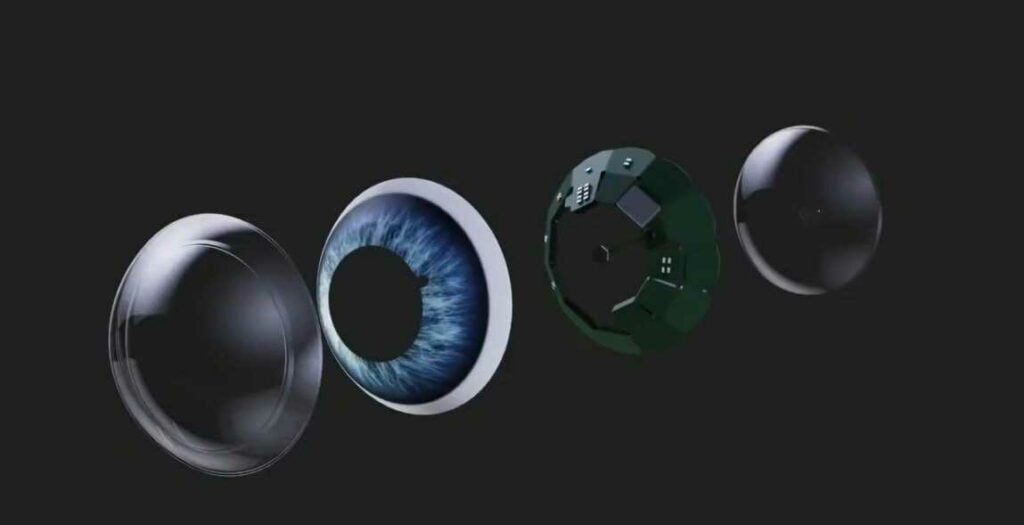Mojo Vision has developed a new augmented reality (AR) contact lens that it claims will change how humans see and interact with the world.
The smart contact lens has an inbuilt display that gives users live information about their surroundings without affecting their perception of the world, according to Steve Sinclair, Mojo Vision senior vice president of product and marketing.
Also read: Could A ChatGPT-Enhanced Bing Kill Google?
“Mojo Lens [as the lens is known] is designed not to bombard you with data but to elevate your vision by proving the information you need exactly when it’s needed,” he said. “When not in use, the technology just fades away. We call this concept ‘invisible computing.'”

Mojo Vision contact lens: How it works
Mojo Vision had already been working on a smart contact lens for about five years before the company first came onto the public scene in 2018. Actual research and development around the idea started 10 years earlier, officials say.
The company raised $205 million in funding led by Dolby Family Ventures, HP Tech Ventures, Motorola Solutions, Edge Investments, Amazon Alexa Fund and others. In April 2022, Mojo Vision unveiled its first “feature complete” prototype of the smart contact lens.
The prototype is now almost ready to start testing in the eye internally, after years of external tests. According to Mike Weimer, Mojo Vision CTO and cofounder, the AR contact lens works even with eyes closed, allowing users to see in the dark or in low light situations.
The lens includes thin films, biosafe batteries to power the system as well as motion sensors to enable “accurate eye-tracking.” It also carries a low-powered image sensor that is used for computer vision and scene detection, the same kind of tech used in smart watches.
“At the heart of the contact lens is the world’s smallest and densest dynamic LED display,” he elaborated in a YouTube video. “With this we can display crisp, text, photos and video in a package that is less than 1mm in diameter”
However, the screen displays content only in shades of green even in the latest prototype. Resolution comes in at 14,000 pixels per inch. The lens are made to be worn and removed, then charged in their own case wirelessly overnight, disinfected, and then you can wear them again.
The prototype does not have any lag when streaming visual data. Anyone hooked up with the eyewear will be able to interact with AR content at just a glance, the company claims.
Real world application of Mojo Vision AR lens
The Mojo Lens technology can be used for a number of real world applications. For instance, the lens helps to enhance one’s view of the world around without clicking anything or looking down. It can be used to display calendar or route information in everyday life.
“One of our first medical applications is using augmented reality overlays like edge detection and contrasting to help people with vision impairments such as glaucoma and macular degeneration,” said Mojo Vision CEO Drew Perkins.
Whether you’re out for a run or running a meeting, see what’s coming next without looking away at a device. One day Mojo Lens will provide step-by-step guidance during your event—not just before or after. #duringdata Learn about Mojo Lens here: https://t.co/zI6DNNe1PO pic.twitter.com/kir3X1qB3D
— Mojo Vision (@MojoVisionInc) August 26, 2022
Uptake for the lens is also expected in sport. Mojo Vision has worked closely with some of the biggest names in fitness such as Adidas to provide what its calling an “eyes-up, hands-free” workout. The lens is said to display relevant measurements say during running.
Much of what the Mojo Lens does or is expected to do remains speculative at this stage, according to Scott Stein, editor at large at CNET. Stein first reviewed the smart contact lens before the coronavirus pandemic in 2020 at CES in Las Vegas.
“I got to look at this eye-tracking display technology. It is not augmented reality,” he explained on Twitter.
“It’s not the same thing as, you know, casting 3D objects into the real world like when you say ‘magic leap’ or Snapchat glasses or any of the technology that you will see coming soon. But it is a form of AR in that it will display things that you could see while interacting with the world.”
Snap Inc’s “Spectacles,” initially released in 2016, began incorporating AR elements in its third generation product last year.
Mojo Lens five years away from everyday use
Perkins, the Mojo Vision CEO, says the company’s microLED technology will “disrupt the entire $160 billion display industry”. He believes the tech is ahead of the curve and could be used for next-generation headsets, advanced televisions and video walls.
However, the company has found the going tough. It announced recently it would layoff 75% of its staff to cut costs – a trend that has become common within the tech industry in recent months. Mojo Vision also paused the development of the product due to a lack of funding.
“Even though the pursuit of our vision for Invisible Computing is on hold for now, we strongly believe that there will be a future market for Mojo Lens and expect to accelerate it when the time is right,” Perkins wrote.
Mojo Lens is about five years away from being able to bring to the market any real, actual everyday use products. When that happens it is likely that the tech will be used first to help improve vision for those with vision impairments.









 and then
and then